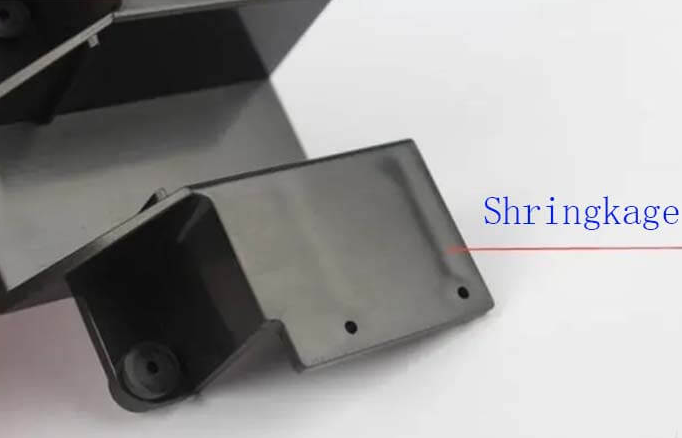
Increasing shrinkage in injection molding is generally not a desired outcome, as it can lead to dimensional inaccuracies and defects in the final part. However, there are specific scenarios where increasing shrinkage might be necessary to achieve certain design or fit requirements. Here are several methods to increase shrinkage in injection molding:
1. Adjusting Machine Settings
- Reduce Holding Pressure: Lowering the holding pressure can lead to more shrinkage as the material is not packed as tightly into the mold cavity.
- Decrease Holding Time: Reducing the holding time allows the material to shrink more as it cools without being constrained by the mold.
- Increase Melt Temperature: Higher melt temperatures can increase the material’s flowability, leading to more shrinkage upon cooling.
- Decrease Injection Pressure: Lowering the injection pressure can result in less material being forced into the mold, leading to greater shrinkage.
[elementor-template id=”4330″]
2. Mold Design Adjustments
- Increase Mold Temperature: Raising the mold temperature can allow the material to cool more slowly, leading to increased shrinkage.
- Design for Shrinkage: Incorporate additional allowances in the mold design to account for the increased shrinkage.
3. Material Considerations
- Select High-Shrinkage Materials: Choose materials known for higher shrinkage rates. For instance, semi-crystalline plastics like polyethylene (PE) and polypropylene (PP) typically have higher shrinkage compared to amorphous plastics like polystyrene (PS).
- Additives: Use additives that can increase the shrinkage rate of the material.
4. Process Optimization
- Control Cooling Rate: Allowing the part to cool more slowly can lead to increased shrinkage. This can be achieved by adjusting cooling parameters or using insulating materials.
- Optimize Part Geometry: Design parts with thicker sections, which tend to shrink more as they cool.
Detailed Steps to Increase Shrinkage
- Machine Settings:
- Holding Pressure and Time: Reduce both holding pressure and holding time to allow the material to shrink more as it cools.
- Melt Temperature: Increase the melt temperature to improve material flow and increase shrinkage upon cooling.
- Injection Pressure: Lower the injection pressure to reduce the amount of material packed into the mold cavity.
- Mold Design:
- Mold Temperature: Increase the mold temperature to allow the material to cool more slowly and shrink more.
- Allowance for Shrinkage: Design the mold with additional allowances to account for the expected shrinkage.
- Material Selection:
- High-Shrinkage Materials: Choose materials with higher inherent shrinkage rates.
- Additives: Incorporate additives that promote increased shrinkage.
- Cooling and Geometry:
- Cooling Rate: Control the cooling rate to allow for slower cooling, which can increase shrinkage.
- Part Geometry: Design parts with thicker sections to increase the potential for shrinkage.
[elementor-template id=”4331″]
Example Scenario for Increasing Shrinkage
Suppose you have a part that needs to fit tightly into another component, and a slight increase in shrinkage would help achieve this fit:
- Analyze Current Shrinkage: Measure the current shrinkage rate of the part.
- Adjust Machine Settings: Lower the holding pressure and time, increase the melt temperature, and decrease the injection pressure.
- Modify Mold Temperature: Raise the mold temperature to slow down the cooling process.
- Select Appropriate Material: Choose a material with a higher shrinkage rate or add suitable additives.
- Monitor and Adjust: Continuously monitor the process and adjust parameters as needed to achieve the desired shrinkage.
Conclusion
Increasing shrinkage in injection molding involves careful manipulation of machine settings, mold design, material selection, and process parameters. While generally not desired, certain design or fit requirements might necessitate increased shrinkage. By implementing the strategies outlined above and continuously monitoring the process, manufacturers can control and achieve the desired level of shrinkage in their molded parts.
Related Conten: Quick Turn Injection Molding
 DTG Mould Trade Process |
|
| Quote: | According to sample, drawing and specific requirement. |
|---|---|
| Discussion | Mold material, cavity number, price, runner, payment, etc. |
| S/C Signature | Approval for all the items. |
| Advance | Pay 50% by T/T |
| Product Design Checking | We check the product design. If some position is not perfect, or can not be done on the mould, we will send customer the report. |
| Mold Processing | Send report to customer once each week |
| Mold Testing | Send trial samples and try-out report to customer for confirmation |
| Mold Modification | According to customer’s feedback. |
| Balance Settlement | 50% by T/T after the customer approved the trial sample and mould quality. |
| Delivery | Delivery by sea or air. The forwarder can be designated by your side. |
 |
|

